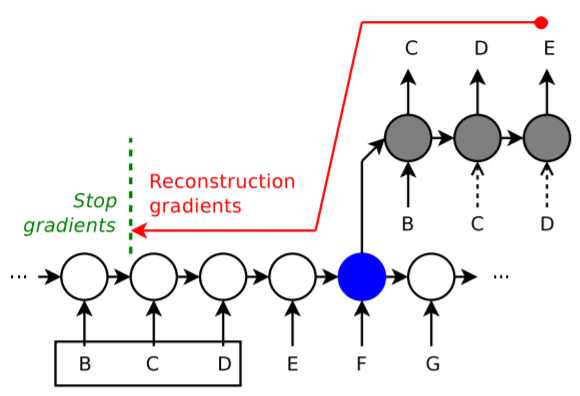An Implementation of Learning Longer-term Dependencies in RNNs with Auxiliary Losses (Trinh et al. 2018) in PyTorch.
The paper proposes a simple method to augment RNNs with unsupervised auxiliary losses in order to improve their ability to capture long-term dependencies.
This repo gives you an incomplete implementation of LSTM augmented with reconstruction auxiliary loss(r-LSTM). Since i was not able to find any code available for this paper, i had to improvise many details by myself. I tried to reproduce paper's results but without success. I'm really waiting for any comments or contributions to improve this repo. Thanks!
PyTorch 0.4 & Python 3.6
Numpy
Torchvision
TensorboardX
python main.py --cuda for full training with BPTT 300.
python main.py --cuda --bptt 784 for full training with full BPTT.
python main.py --cuda --single for LSTM.
python main.py --cuda --pre_epochs 0 for skipping pretraining.
python main.py --cuda --dataset MNIST to use MNIST as dataset.
You can use MNIST or pMNIST with --dataset MNIST or --dataset pMNIST.
pMNIST is sequential MNIST where each pixel sequence is permuted in the same. It is harder to capture long-term dependencies in pMNIST so the efficacy of using r-LSTM stands out much more when using pMNIST
| Models | No Emb | Full Emb | Part Emb |
|---|---|---|---|
| LSTM Full BP | 0.9095 | 0.8406 | 0.8759 |
| LSTM Truncate 300 | 0.9026 | 0.841 | 0.873 |
| r-LSTM T300 | 0.9037 | 0.8743 | 0.8863 |
| r-LSTM Full BP | 0.9129 | 0.8856 | 0.8835 |
I'm not sure how to implement embedding(project input) in a paper so tried to test several methods. In No Emb, I just tried to 1 dimensional input pixel to 128 dimensional dense vector without embedding matrix. In Full Emb, Every pixel(0~255) has its own dense vector in embedding matrix. In Part Emb, Embedding is only applied to auxiliary decoder network.


